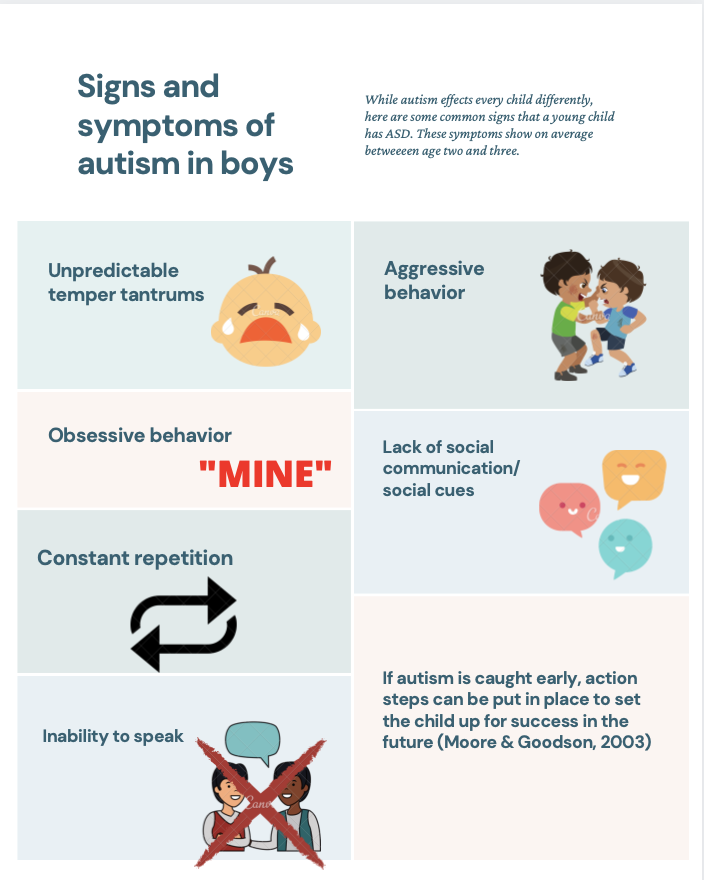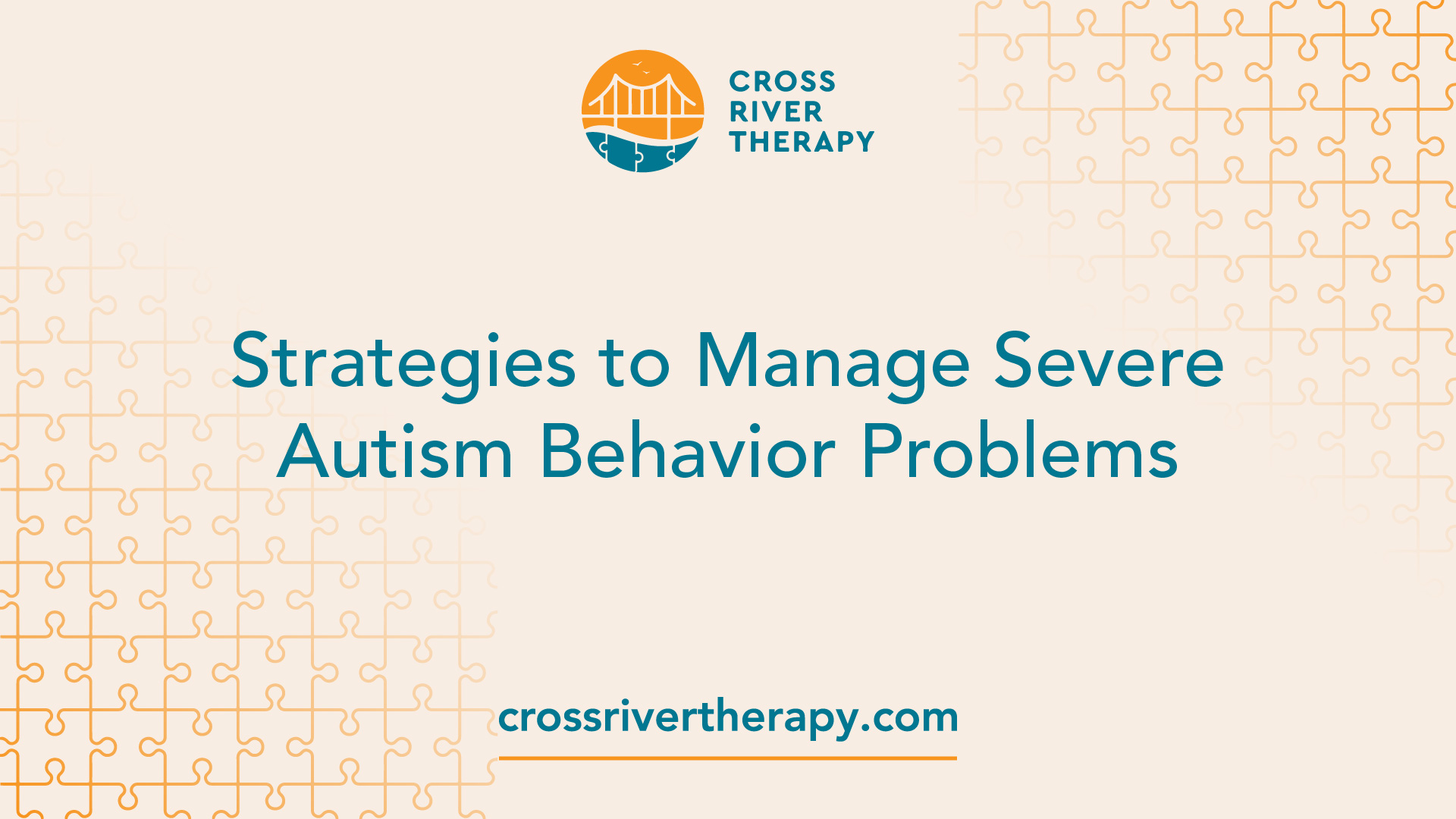Top benefits of routine-based learning guided by an Autism Therapist
Top benefits of routine-based learning guided by an Autism Therapist
Blog Article
Recognizing the Effect of Behavioral Autism on Every Day Life and Social Interactions
You may not understand just how deeply behavior autism impacts day-to-day live and social communications. People on the spectrum commonly navigate a globe full of interaction difficulties and sensory overload. These obstacles can bring about aggravation and seclusion, impacting their relationships and total well-being. Recognizing these subtleties is essential for cultivating helpful settings. What approaches can we carry out to develop even more significant links and inclusive areas? The responses could surprise you.
Defining Behavior Autism and Its Characteristics
Behavior autism, often referred to as autism range problem (ASD), encompasses a variety of problems characterized by obstacles in social interaction, interaction, and repeated behaviors. You might see that people with ASD often struggle to analyze social hints, which can bring about misconceptions in conversations. They might locate it hard to develop eye get in touch with or engage in little talk, making social situations feel frustrating.
Interaction problems can show up in different means, from postponed speech growth to a choice for using fewer words. By acknowledging these traits, you can foster an environment that advertises acceptance and motivates efficient communication, aiding people with autism grow in their everyday communications.
The Range of Autism: Understanding Variability in Habits
Autism spectrum disorder (ASD) isn't a one-size-fits-all diagnosis; it differs commonly amongst individuals. You might see that some individuals with ASD exhibit moderate symptoms, while others may face more considerable challenges. This irregularity can materialize in actions, passions, and sensory level of sensitivities. You might encounter individuals who are very spoken and engage easily in conversations, while others could favor solitary tasks or interact non-verbally.
In addition, the means individuals with ASD respond to sensory input can vary substantially; some may be bewildered by intense lights or loud sounds, whereas others grow in stimulating atmospheres. The range likewise consists of distinctions in social interactions; some people may battle to translate social cues, while others browse social setups with relative ease. Comprehending this variability is important, as it assists you value everyone's distinct experience and dressmaker assistance to their particular requirements, promoting an extra comprehensive setting for everybody.
Interaction Challenges Faced by People With Autism
When you connect with individuals on the autism spectrum, you may discover their special communication challenges. They frequently face problems with both verbal and nonverbal cues, which can impact their social communications. Understanding these obstacles is crucial for fostering much better links and support.

Verbal Interaction Problems
Numerous people on the autism spectrum experience spoken interaction problems that can significantly impact their day-to-day communications. You could locate it challenging to reveal your ideas, feelings, or needs clearly. This can cause stress for both you and those around you, as misconceptions happen. You might fight with initiating discussions, maintaining a subject, or understanding subtleties in speech. Frequently, you might favor using basic language or recurring expressions, which can restrict your ability to engage in much deeper discussions. Your volume, pace, or tone may not line up with social assumptions, causing others to misunderstand your objectives. Identifying these challenges can aid you and your support network develop techniques to improve communication and foster better links with others in your day-to-day live.
Nonverbal Interaction Obstacles
Spoken communication isn't the only difficulty individuals on the autism range face; nonverbal interaction obstacles can be simply as considerable. These obstacles can lead to misunderstandings or misconceptions of social signs, making interactions feel frustrating or complicated. By resolving nonverbal interaction, you can discover techniques to enhance your social experiences and boost your overall quality of life.
Social Interaction Effects
Social communications can usually feel frustrating due to the special communication difficulties dealt with by people with autism. Acknowledging these challenges can help you find strategies to enhance interaction, such as practicing social abilities in secure settings or utilizing visual help. Recognizing your demands permits you to browse social interactions with greater confidence and convenience.
Social Interaction and Partnership Building in Autism
While structure relationships can be testing for individuals with autism, understanding their special viewpoints and communication styles can cultivate meaningful links. You might notice that many people on the spectrum prefer direct interaction and might battle with social cues or small talk. By being straightforward in your communications, you can aid create an environment where they feel comfy.
Put in the time to listen and observe exactly how they reveal themselves. This understanding can assist you in steering conversations much more discover this effectively. Involving in shared interests can also work as a bridge to deeper links. Whether it's a hobby, a preferred program, or a mutual interest, these usual threads can open up doors to friendship.
Daily Life Routine: Browsing Obstacles and Approaches
Maneuvering every day life regimens can be specifically testing for individuals with autism, particularly when unexpected modifications take place. You could discover convenience in having an organized schedule, as it assists you expect what's following. When disturbances occur, it's typical to really feel overloaded or anxious. To navigate these difficulties, think about applying aesthetic timetables or lists. These tools can offer clearness and confidence.
Establishing a regimen that consists of sensory breaks can additionally be useful. You can plan time-outs throughout your day to charge. It's vital to interact with those around you, allowing them understand your demands and preferences. This helps produce an understanding setting.
Finally, practice mindfulness techniques to manage tension and anxiety. Basic breathing workouts or grounding methods can make a considerable difference. By including these methods, you can enhance your daily regimen and reduce interruptions, making life feel much more convenient.
Staminas and Abilities of Individuals on the Autism Spectrum
Understanding day-to-day life regimens is simply one element of the autism experience. Numerous individuals on the autism spectrum possess remarkable strengths and capacities that establish them apart.
In addition, your memory skills commonly radiate, particularly in locations of interest. Aba Therapist Near Me. This flair for retaining info can make you an important source in fields like innovation, art, or science. You might likewise exhibit solid visual thinking, enabling you to envision complex concepts and resolve issues artistically
Furthermore, your unique perspective on the world can promote empathy and understanding in others, improving social communications. Welcoming these staminas not just increases your confidence yet likewise aids others value the diverse skills you offer the table.
Creating Comprehensive Settings for Individuals With Autism
Creating inclusive environments for individuals with autism begins with developing sensory-friendly spaces that accommodate their distinct demands. You can also promote opportunities for social interaction, assisting to construct friendships and links. By making these modifications, you'll add to a much more welcoming environment for everybody.
Designing Sensory-Friendly Spaces
While designing sensory-friendly spaces, it's essential to review the special requirements of people with autism. Beginning by selecting relaxing colors and soft lighting to produce a comforting environment. Include silent areas where people can charge and pull back when bewildered. You'll intend to minimize loud sounds and disturbances, utilizing soundproof products or white sound machines to aid preserve peace. Take into consideration responsive components like soft textiles or fidget-friendly things that can supply convenience. Ascertain that areas are adaptable, permitting for easy reformation to accommodate navigate to these guys different activities. Consist of aesthetic routines or clear signs to help people navigate the space with confidence. By thoughtfully incorporating these elements, you can create a welcoming ambience that supports sensory demands and advertises overall wellness.
Advertising Social Interaction Opportunities
Creating sensory-friendly areas not only addresses individual convenience yet additionally establishes the stage for significant social communications amongst people with autism. Motivate peer mentoring, pairing individuals with autism with encouraging peers that can lead them with social scenarios. By carrying out these techniques, you can improve social opportunities, helping people with autism construct relationships and reinforce their social skills in a safe, welcoming setting.

Often Asked Concerns
Just How Can Pals Support Somebody With Behavioral Autism?
You can support a buddy with behavioral autism by holding your horses, listening proactively, and valuing their boundaries. Take part in tasks they enjoy, connect honestly, and produce a comfortable atmosphere where they really feel valued and comprehended.
What Resources Are Offered for Moms And Dads of Kid With Autism?
You can check out various sources for moms and dads of kids with autism, including support system, instructional sites, and regional neighborhood services. Getting in touch with various other parents can additionally offer useful understandings and shared experiences to aid browse obstacles.
Can Behavioral Autism Adjustment With Time?

Yes, behavior autism can alter over time. You might observe changes in communication, social skills, and habits as your kid expands. Early intervention and assistance usually play vital functions in these developmental adjustments.
How Do Sensory Sensitivities Influence Day-to-day Live?
Sensory sensitivities can make daily experiences overwhelming. You may battle with intense lights or loud sounds, causing tension or avoidance. Discovering settings that fit your demands can substantially improve your convenience and general life.
What Are Usual Misconceptions Regarding Behavioral Autism?
You might navigate to this website assume behavior autism just impacts communication abilities, but it's more facility. Numerous think individuals lack compassion or knowledge, which isn't real. Comprehending these false impressions helps foster acceptance and assistance for those on the range.
Behavioral autism, typically referred to as autism spectrum condition (ASD), includes a variety of problems characterized by difficulties in social interaction, interaction, and repetitive habits.Social interactions can usually really feel frustrating due to the distinct communication obstacles dealt with by people with autism.Designing sensory-friendly rooms not just addresses specific convenience but likewise establishes the stage for significant social communications among people with autism. Urge peer mentoring, coupling individuals with autism with encouraging peers that can guide them with social situations. By implementing these techniques, you can enhance social possibilities, assisting people with autism develop relationships and enhance their social abilities in a safe, inviting atmosphere.
Report this page